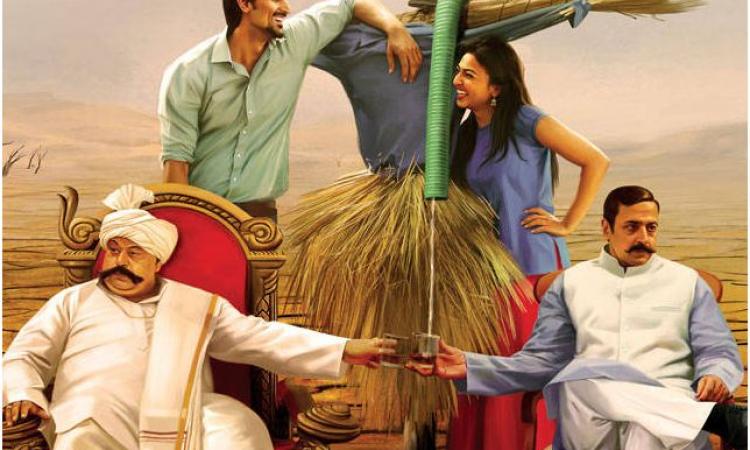
‘Kitna shaant hai ye paani, aur iske liye yeh rajniti’ (the water is so still, yet there is politics around it). This exchange between the two protagonists in the film ‘Kaun kitne paani mein’ says a lot about its subject. Set in a water starved locale in Odisha, this Hindi film created as a satirical drama is a love story between a young man of the royal Singhdeo lineage and the spirited daughter of a local politician.
Upri and Bairi are adjacent villages with Upri, true to its name, nestled up in the hills and Bairi located below it. Long standing hostilities over caste and class exist which intensify in the 1980s with the brutal murder of two lovers from across these villages. A wall erected as a symbol of rift between the two villages does not rule out unruly encounters between them.
Upri is home to the Singhdeo’s, who ruled the region historically but are a decadent lot now. Brij Kishor Singhdeo, the present king played by actor Saurabh Shukla, treats water as a more coveted commodity than whiskey. The local whore also prefers to be paid in water over cash. Yes, water is a valued barter item here. The village panda (priest) pleads with the people to perform a mahayagna to bring in waters and the village weaver toils furtively to build an underground tunnel for the same purpose.
Water management was a significant factor in Upri's and Bairi's trajectories--while the people of Bairi laboured in their fields, Upri's squandered their wealth and now reel under an acute water crisis. Bairi, on the other hand, is water abundant. This prompts Raja Singhdeo to sell the village much like real cases in the recent past where drought hit villages have been put up for sale. A boy sits on a tree with a placard that reads ‘Village for sale’ but there are no takers. So Singhdeo decides to send off his college-returned son Raj (Kunal Kapoor) to Bairi to ‘fall in love’ with the daughter (Paro) of the wannabe vidhayak (MLA) Kharu Pehalwan played by Gulshan Grover. Clearly, the need for water loosens the class and caste barriers for Singhdeo. Marital ties, Singhdeo fervently hopes, will help draw waters from Bairi to Upri.
This is when the incongruent lives of Raj and Paro (played by Radhika Apte) intersect. Love blossoms as the intra-village conflict deepens. A good thing about the film is that it takes no shortcuts to address the issue of water without appearing spent or fake. Of course, there are detours to address other issues like caste and class but all this does not turn it into an ugly tale.
The film, reminiscent of Shyam Benegal’s ‘Welcome to Sajjanpur’, is frothily written and echoes the societal changes in Odisha well. Radhika Apte, a multifaceted actress plays a fervent water conservationist. Unlike her other recent roles, this one asks very little of what she is capable of. Gulshan Grover as Kharu Pehelwan brings out the nuances in his character very well. Kunal Kapoor manages to play his role effectively but is overshadowed by Saurabh Shukla who plays his father and captures the decadence of the social order with a humour-laden performance.
Rangabati, a song which many of us have heard while growing up in Odisha is impressive. Even this Bollywood version works! Nila Madhab Panda, the film’s director and story writer, stated in an interview that he wanted to steer clear of the tag of a ‘social filmmaker’ and he has done that quite successfully. The film is well worth a watch.